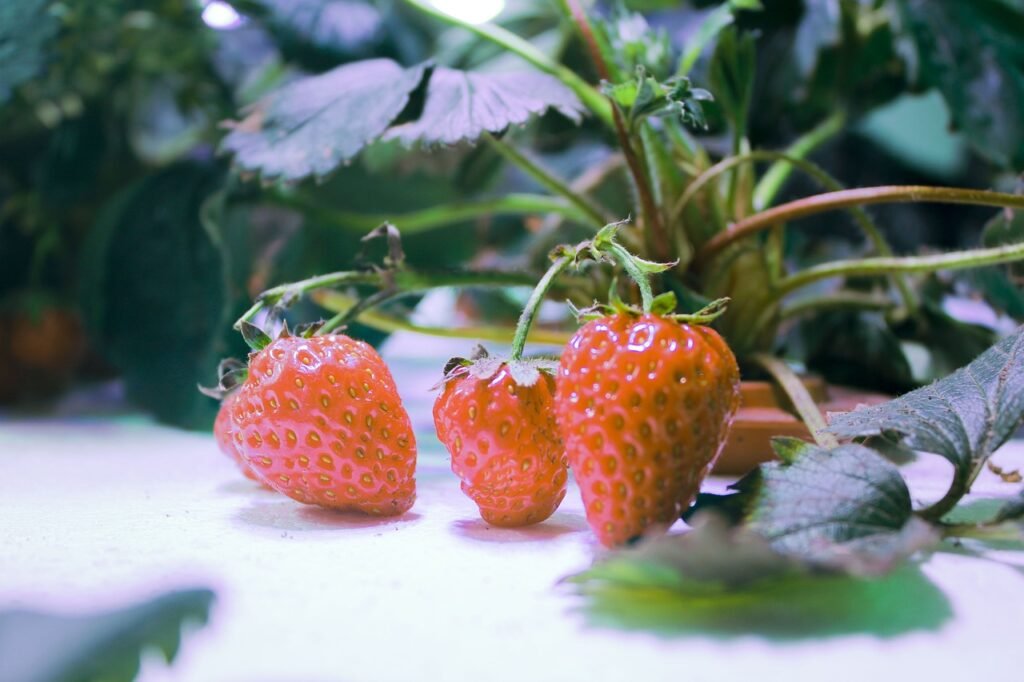As the interest in sustainable living and homegrown produce continues to rise, indoor hydroponic gardens have emerged as a revolutionary way to cultivate plants. These soil-free gardens offer a range of benefits, from maximizing space to providing fresh, nutritious food year-round. If you’re considering setting up your own hydroponic garden, here’s a guide on how they work, why they’re advantageous, and which edible plants thrive in them.

How Indoor Hydroponic Gardens Work
Hydroponics is a method of growing plants without soil, using a nutrient-rich water solution to deliver essential minerals directly to the roots. Indoor hydroponic systems typically consist of the following components:
Growing Medium
Instead of soil, hydroponic gardens use inert media such as perlite, vermiculite, or rock wool. These materials provide stability and support for the plant roots while allowing for optimal water and air retention.
Nutrient Solution
Plants need a mix of water and nutrients to grow. Hydroponic systems use a specially formulated nutrient solution, which is a blend of essential minerals dissolved in water. This solution is carefully monitored and adjusted to ensure plants receive the right balance of nutrients.
Water Delivery System
Hydroponic gardens feature various water delivery systems to ensure that the nutrient solution reaches the plants’ roots. Common systems include:
– Nutrient Film Technique (NFT): A thin film of nutrient solution continuously flows over the plant roots.
– Deep Water Culture (DWC): Plant roots are suspended in a nutrient-rich oxygenated water reservoir.
– Ebb and Flow (Flood and Drain): The growing tray periodically floods with nutrient solution and then drains away.
– Drip System: Nutrient solution is dripped onto the plant roots from a tube or nozzle.
Lighting
Since indoor gardens lack natural sunlight, grow lights are used to provide the necessary light spectrum for photosynthesis. LED grow lights are popular for their efficiency and ability to simulate natural sunlight.
Environmental Control
Maintaining optimal conditions is crucial. This includes regulating temperature, humidity, and CO2 levels to create a conducive environment for plant growth.

Benefits of Hydroponic Gardens
Space Efficiency: Hydroponic systems can be set up in small spaces, making them ideal for urban environments or homes with limited outdoor areas. Vertical hydroponic gardens and compact systems fit well into apartments or small rooms.
Resource Efficiency: Hydroponic gardening uses significantly less water compared to traditional soil-based farming. The closed-loop system recirculates water, minimizing waste and conserving resources.
Faster Growth: Plants often grow faster in hydroponic systems due to the direct delivery of nutrients and optimized growing conditions. This means you can enjoy homegrown produce more quickly.
Reduced Pest and Disease Risks: Without soil, the risk of soil-borne pests and diseases is greatly reduced. This results in healthier plants and less need for pesticides.
Year-Round Harvesting: Indoor hydroponic gardens allow for year-round cultivation, providing fresh produce regardless of the season or outdoor weather conditions.

Best Edible Plants for Hydroponic Gardens
Leafy Greens: Lettuce, spinach, and kale thrive in hydroponic systems. They have relatively short growth cycles and respond well to the controlled environment.
Herbs: Basil, mint, cilantro, and parsley are excellent choices for hydroponic gardens. Herbs grow quickly and can be harvested continuously, adding fresh flavors to your dishes.
Tomatoes: Cherry and grape tomatoes perform well in hydroponic systems, particularly in systems with good support for the growing plants.
Cucumbers: Cucumbers can also be grown hydroponically, although they require a bit more space and support for their vining growth.
Peppers: Bell peppers and hot peppers adapt well to hydroponic cultivation, producing vibrant fruits in a controlled environment.

Where to Place Your Indoor Hydroponic Garden
Choose a spot with sufficient light or where you can easily set up grow lights. Areas near windows or dedicated grow spaces are ideal.
Place your garden in a location where it won’t be disturbed frequently. This minimizes the risk of accidental damage and ensures a stable growing environment.
Ensure the location maintains a consistent temperature suitable for plant growth. Avoid areas with extreme temperature fluctuations, such as near heaters or air conditioners.
Hydroponic systems need regular monitoring and maintenance, so choose a spot with easy access to water and power sources for the grow lights and pumps.
Indoor hydroponic gardens offer a modern and efficient way to grow fresh produce right at home. With their space-saving design, resource efficiency, and ability to produce healthy plants year-round, they are an excellent choice for anyone looking to embrace sustainable living and enjoy homegrown food. By selecting the right edible plants and placing your garden in an optimal location, you can reap the benefits of this innovative gardening method and enhance your culinary experiences.